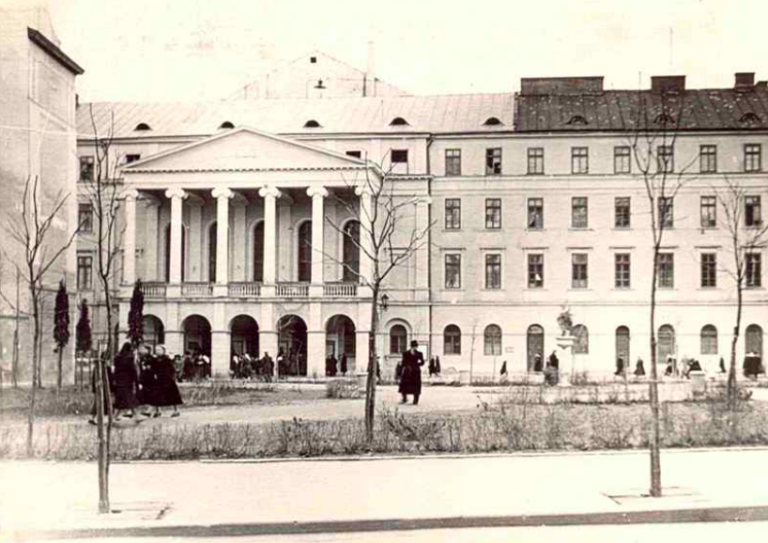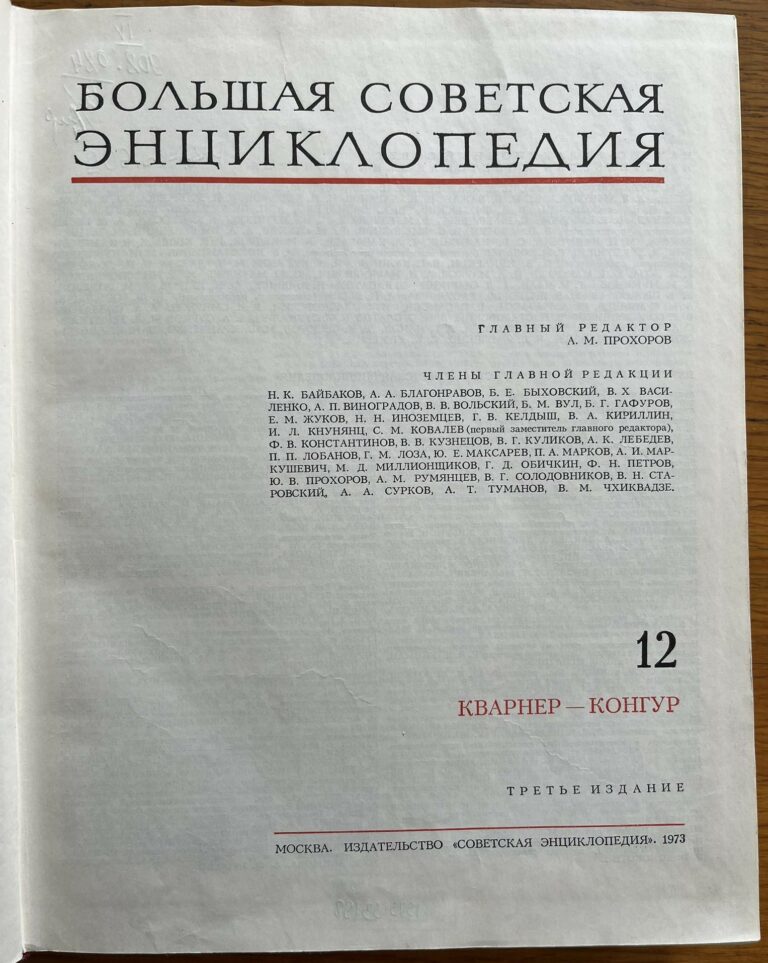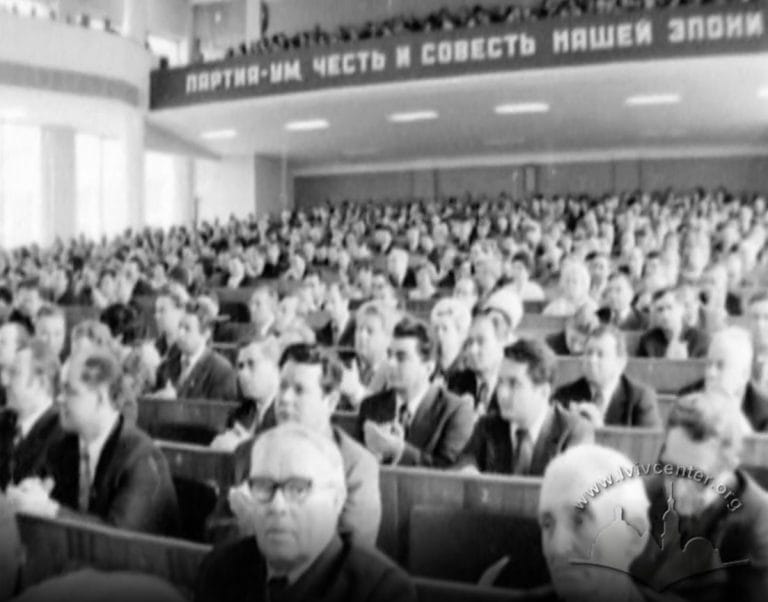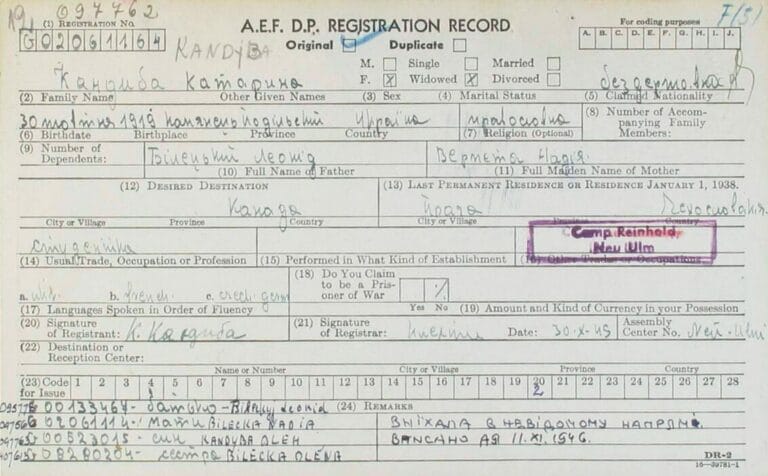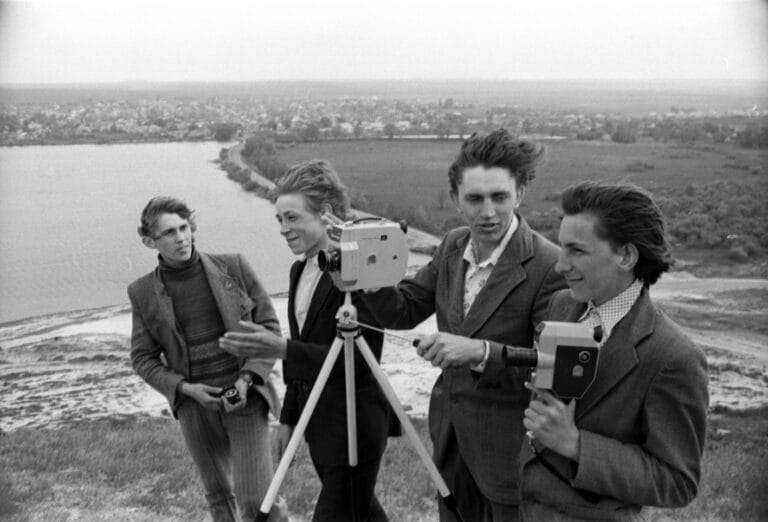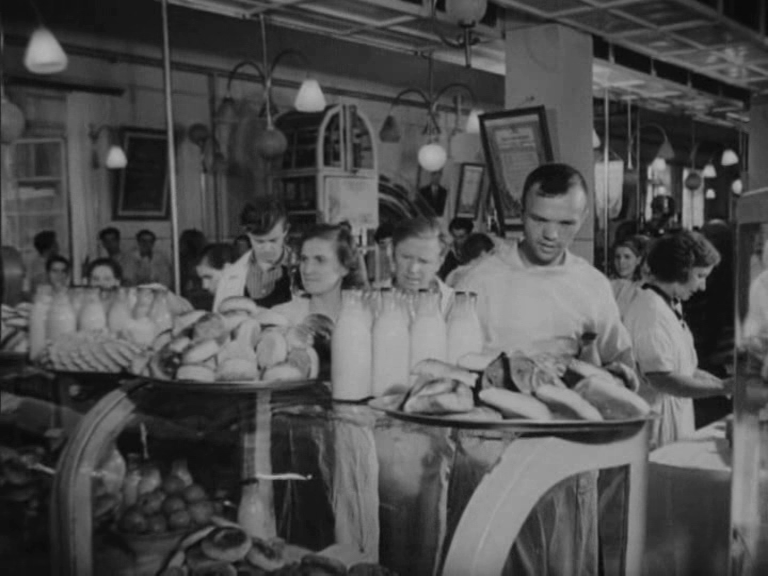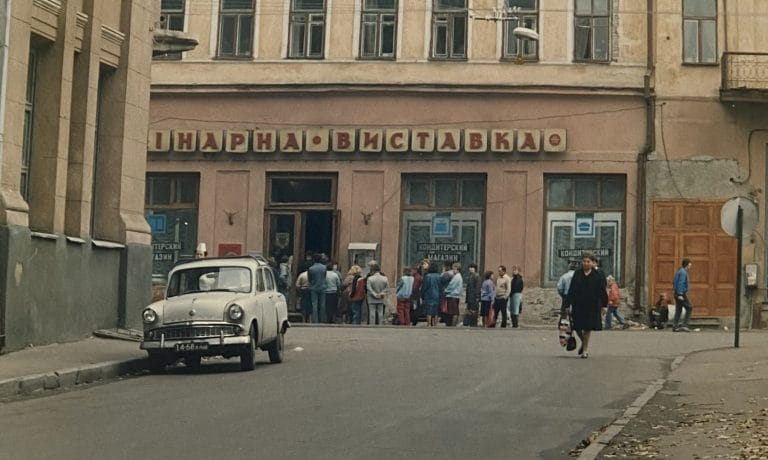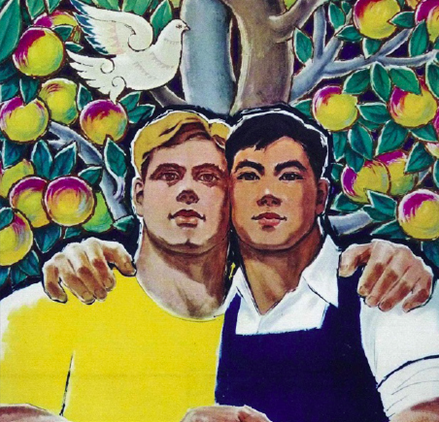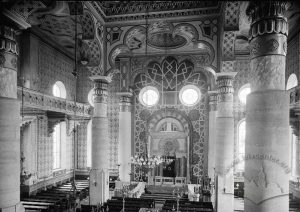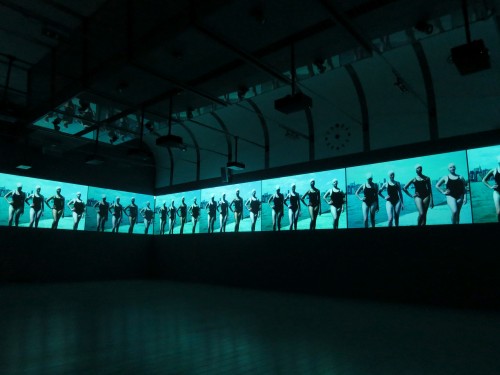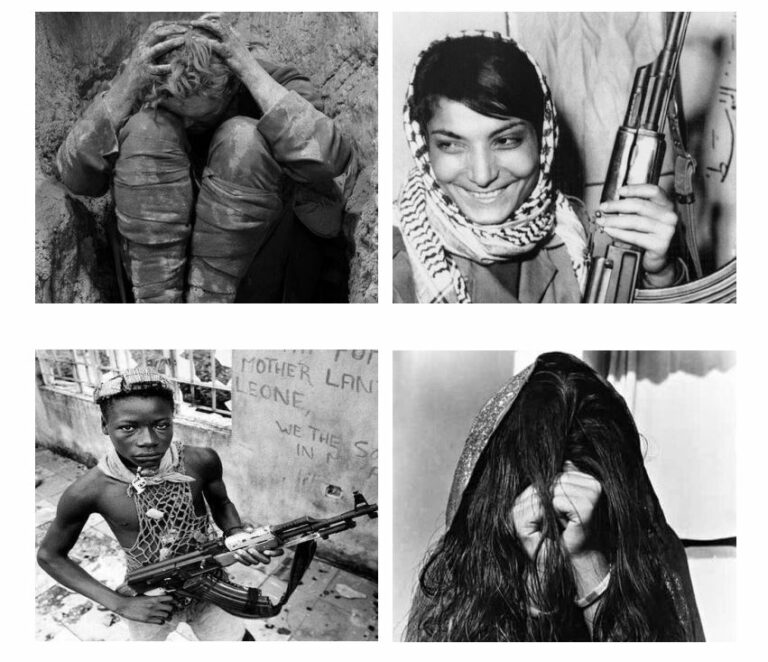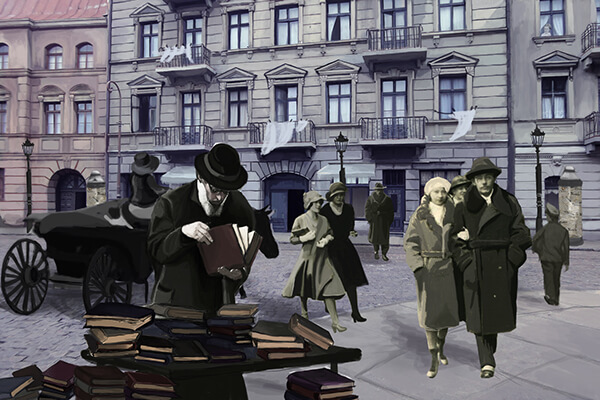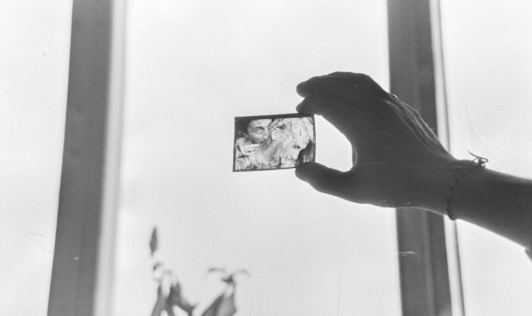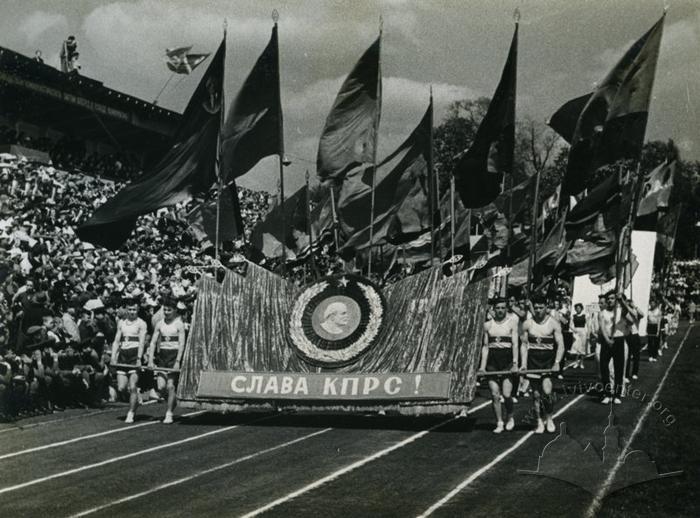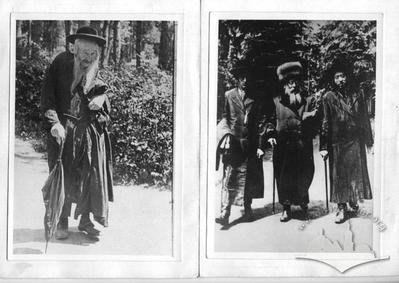1960s
Primary Sources

A satirical report by the Soviet magazine Perets on the use of official vehicles for private affairs, 1960
The humorous and satirical magazine Perets, published (albeit intermittently) since 1922, served as a supplementary weapon for the government in its fight against social issues. Its editorial board frequently aligned with various official campaigns, wielding its sharp wit to expose violations, shortcomings, and vices, thereby shaping public attitudes. Hryhorii Bezborodko, an experienced feuilletonist for Perets, often targeted the “antipodes of Soviet morality,” such as indifference, mismanagement, careerism, and other societal flaws. His report was no coincidence; it aimed to bolster the campaign against the misuse of official vehicles. Despite the 1959 restrictions on the use of state cars, members of the nomenklatura continued to exploit loopholes, necessitating public shaming rather than relying solely...

Corruption in Kolomyia, Stanislav (Ivano-Frankivsk) Oblast, 1962
In the early 1960s, the Ukrainian prosecutor's office reported to the Central Committee of the Communist Party of Ukraine about “exposed groups of large-scale embezzlers of socialist property and bribe-takers who had long been operating within various sectors of the national economy.” The scale of the defendants' shadow income was staggering: during investigations into four cases, authorities seized hundreds of thousands of rubles, single-story houses, kilograms of gold, dozens of cars, and other assets. Such wealth was enabled by a well-developed “shadow economy.” Despite inflated economic plans, strict resource controls, and rigorous oversight, resourceful producers consistently found ways to generate “surplus” production, which they used to enhance their own comfort and secure patronage....

Hrytsko Chubai’s “prison” poetry
Hrytsko Chubai is one of the most prominent Ukrainian poets of the 1970s and a central figure in the Ukrainian underground culture of Lviv during this period. Below, two poems by Hrytsko Chubai, “Easter - Kosmach, 1970” and “Vertep” are analyzed as part of the course “(Re)thinking “Soviet”: Modern Ukrainian Identity and the Legacy of Communism” (Course Director: Olena Palko, University of Basel).

Testimonies of Ihor Kostetskyi’s Fate under Nazi Rule
Ihor Kostetskyi was just one example of several several million individuals who were taken by the Nazi Army from occupied eastern European territories and had to work as Ostarbeiter in the German war industry. Before the war, Kostetskyi was involved in several cultural, artistic, and creative projects and initiatives. Born in Kyiv, he made little declaration of his Ukrainianness until Carpathian Ukraine started to seek independence in 1938. When he was mobilized into the Red Army at the start of the German invasion in 1941, he was in the process of changing his real name, Ivan Merzliakov, to the pen name, Ihor Kostetskyi. This is the name he would use in the future....
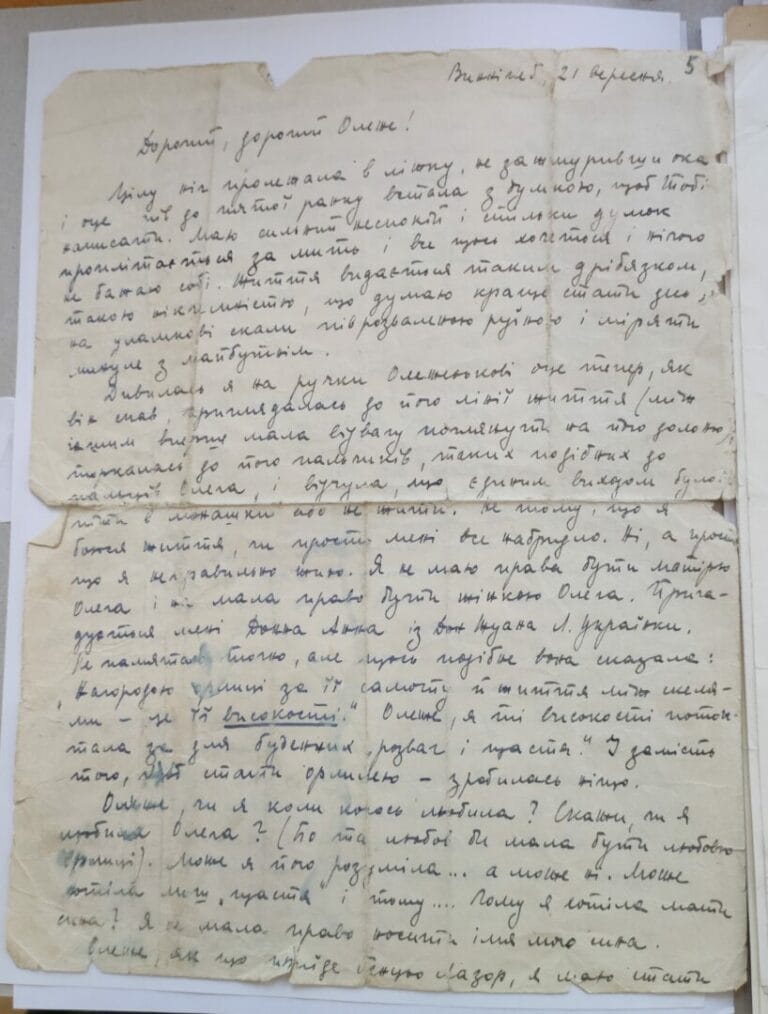
Kateryna Biletska’s correspondence with Oleh Lashchenko, 1950-1990
The fund of the Ukrainian publicist and public character Oleh Lashchenko at the Central State Archive of Public Associations of Ukraine contains seven letters and one postcard from Kateryna Biletska (Kandyba by first husband), Oleh Kandyba’s wife (literary pseudonym Oleh Olzhych), a poet and member of the Ukrainian nationalist underground movement, head of the cultural and educational department of the Provid of Ukrainian Nationalists (PUN) and the Revolutionary Tribunal of the Organization of Ukrainian Nationalists (OUN) (1939-1941). Lashchenko was not only a longtime friend of the Kandybas, but also the godfather of their only son. He was born in Kyiv in 1914, in 1920 he emigrated to Poland with his parents and elder...
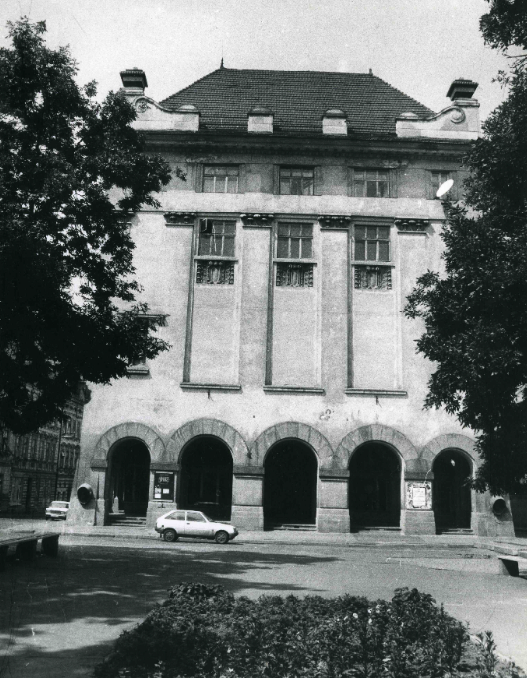
Excerpt from a 2013 interview with Lviv Puppet Theater actress: War, Gulag, Space Race
This is an excerpt from an interview with an actress in Lviv made in 2013. This actress talks about her wartime experience under German occupation and touches on the various cultural institutions she attended during the war. She went to the Lviv Opera Theater, run 1941-1944 by famous actor and director Volodymyr Blavatsky, who had worked with Kurbas’ Berezil and created a name for himself in avant-garde theater in Poland. He left for the west in 1944. She notes Lesia Kryvytska, an actress who worked in interwar Poland, Nazi-occupied Lviv, and then settled at the Maria Zankovetska Theater in postwar Lviv. She also mentions studying ballet at the Opera’s dance studio. Her mention...
Show more
Collapse all

Members of the Communist Labor Brigade and the presentation of Komsomol tickets at the Mariupol Heavy Machinery Plant
The photo shows the moment of the ceremonial presentation of a Komsomol ticket to an employee of the Mariupol heavy engineering plant. In addition to the ticket, a party or Komsomol functionary hands an unknown woman a pennant, which may indicate that this new Komsomol member has already achived significant results in the performance of the party’s labor tasks. Most likely, she is a representative of the leaders of the plant, and it was important for the Soviet system that the leaders of the production were part of the Komsomol-party asset. If we follow the name of this source, then the young worker is part of the “communist labor brigade”, which was an...
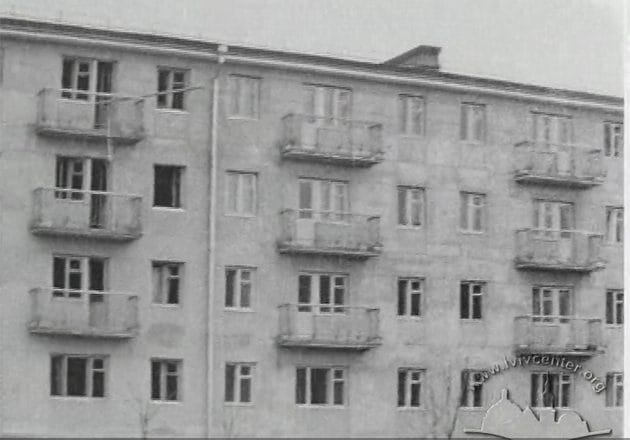
TV News from a Lviv Television Studio in the 1960s
The task of popularizing the Soviet government’s approach to solving the “housing issue” in the Ukrainian SSR was entrusted not only to trade unions and their media—such as construction or architectural magazines—or to artists working in theater and cinema, but also to television. A television studio in Lviv was established in 1955, and by 1957 it was already actively producing local news. These broadcasts typically featured several short stories, each lasting from one to three minutes, focused on the region’s economic and cultural development. When not aired live—live broadcasts being made possible through the use of a mobile television station—the news segments were filmed on 16 mm film by traveling television crews. The...
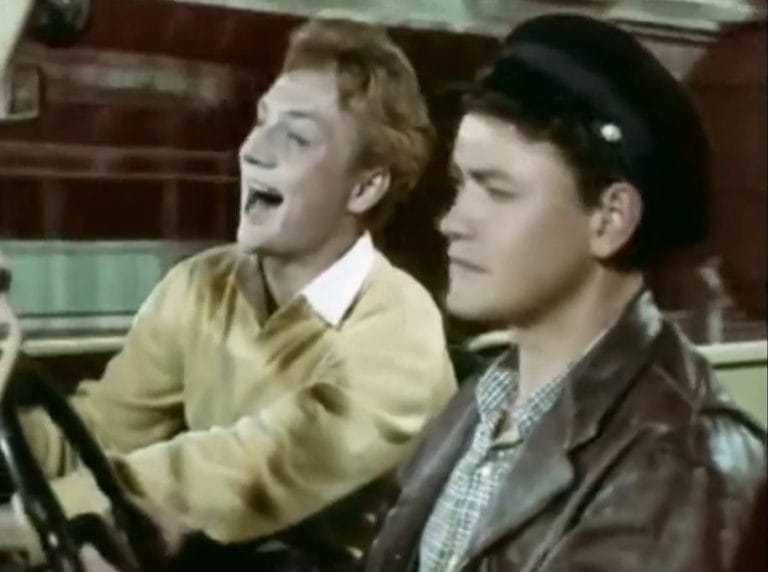
Cheryomushki, a 1963 Soviet Film
In 1961, the USSR’s cinematic authorities approved the idea of adapting the operetta Moscow, Cheryomushki into a film, and the search for a director began. The creators wanted someone with a musical background, so they turned to Herbert Rappaport, a professional musician. Rappaport had gained experience in musical cinema through his participation in Grigori Kozintsev’s Don Quixote (1957, Lenfilm), a renowned Soviet film that received international awards. Interestingly, Rappaport—an ardent admirer of the Austrian composer Gustav Mahler—enjoyed the music of the operetta. His idea to adapt the play into a film received support from Nikolai Rabinovich, professor at the Leningrad Conservatory and chief conductor of the local symphony orchestra, who became the conductor...
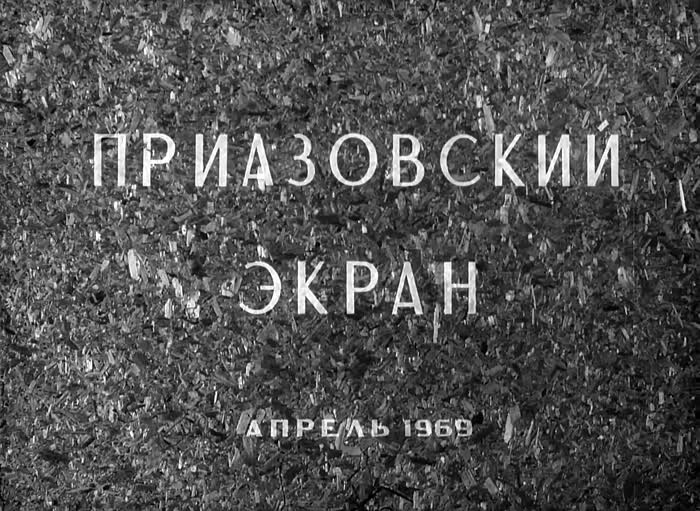
“Screen of Pryazovia” (Pryazovskyi Ekran) № 1, 1969
This newsreel is a valuable source on the history of the development of the Mariupol industry. It was produced by the city club of film amateurs. Following the example of the Ukrkinochronika studio in the capital city which published the main newsreels in the republic, the authors of this piece created a short film report with 4 stories that tell about the deputies, the introduction of innovations in blast furnace steelmaking, about the winners of the socialist competition, and about the meeting of workers with a Soviet cosmonaut.
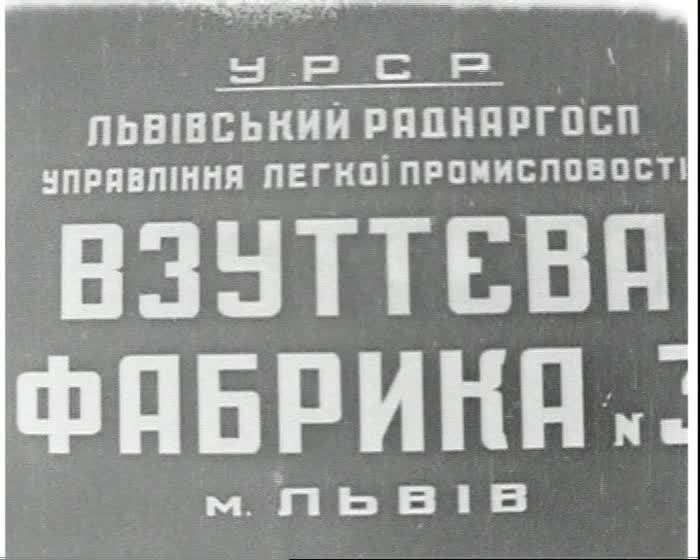
Collective of Communist Labor at Shoe Factory, 1960
Television news of the Lviv Television Studio followed the operators of Ukrkinochronika who chose shoe factory No. 3 as a model enterprise of the city’s light industry. The television camera shows to the audience Kateryna Lysak, an exemplary employee of the enterprise that was granted a status of a “communist labor enterprise”. At such enterprises, the example of the pioneers was to be followed by other workers, and a television clip told the people of Lviv about leaders of production and how the shoe factory was developing.

Song of the Communist Labor Brigades
"Song of Communist Labor Brigades" was written in 1956 by the composer Arkady Filipenko (1912-1983), who, in addition to academic music, wrote works for operettas and films. The verses to the song were written by another outstanding figure of Soviet culture of the Ukrainian SSR, Oleksa Novitsky (1914-1992), who was a military correspondent during the war, and later became a Shevchenko scholar. Both authors had the "right" biographies for writing the anthem of the communist labor brigades, which was performed at official events in the Ukrainian SSR, and was also published in large numbers for performance by professional and amateur groups. The song has a solemn mood and asserts that the communist labor...
The term media, used in the title of this module, is a broad and widely circulated concept, often invoked in discussions about “mass culture.” In Soviet historiography, however, media culture was referred to as “culture for the masses”—an attempt to avoid any association with the capitalist notion of culture. Yet, in both the market capitalist system and the state socialist system, the media in the 20th century brought about the emergence of a new media reality and landscape. By the 1960s and 1970s, their functions and status had grown far more significant than ever before. This module also introduces the concept of mediatization, which describes the way media influence, shape, and intertwine with...
In addressing the causes of unlawful actions committed by high-ranking officials in the 1940s and 1960s, the authorities often attributed them to the lingering influence of pre-revolutionary capitalist mentalities among certain managers. This explanation lost credibility over time, as by the 1970s and 1980s, the leadership consisted largely of individuals born and fully socialized within the Soviet Union, supposedly free from the flaws of other, non-communist societies. In this module, Viktor Krupyna uses unpublished archival materials and available source collections to examine the widespread abuse of power by Soviet officials in the Ukrainian SSR in 1945-1991, its causes, scope, and consequences.
This module by literary scholar Olha Petrenko-Tseunova tells the story of Kateryna Biletska-Kandyba, the wife of Oleh Kandyba (known by the literary pseudonym Oleh Olzhych), a poet and member of the Ukrainian nationalist underground, head of the cultural and educational department of the Leadership of Ukrainian Nationalists (PUN) and the Revolutionary Tribunal of the Organization of Ukrainian Nationalists (OUN) (1939-1941), and her WWII experience and post-war emigration.
The early vision of amateur filmmaking in the Soviet Union was characterized by the pragmatic idea of using the new media not only for entertainment but also to involve a wide range of citizens in the production of newsreels and to create a network of correspondents across the country to cover the construction of socialism. However, despite sporadic attempts, this idea was not immediately implemented on a large scale. The lack of technology and sufficient equipment, and later the political climate of the 1930s, hindered this. It was only after liberalization and Khrushchev's reforms that the idea reappeared on the agenda.
The founders of the Soviet Union believed that the basis for new forms of labor was to be an amateur initiative and talents, of which the people have an endless source, managed by “nationwide accounting and control”. The method of introducing new forms of industry management was the widest propaganda of labor achievements. Soviet ideologists habitually cited Lenin who believed that labor could change a human being under socialism and advised how to organize socialist competition. This module by historian Bohdan Shumylovych is devoted to the topic of labor in communist propaganda, using the example of the 1960s.
У 1950–1960-х роках на підприємствах Радянської України поширилися практики, скеровані на удосконалення праці. Двигуном цього процесу були так звані передовики – учасники руху трудящих СРСР за комуністичне ставлення до праці та за виховання людини комуністичного суспільства.
Reflections

Mutual Deterrence Speech by Secretary of Defense Robert McNamara
The development and use of nuclear weapons in the second half of the 20th century led to the emergence of the so-called doctrine of nuclear deterrence, which began gaining traction among American policymakers in the late 1940s. According to this doctrine, a state's possession of nuclear weapons serves as a safeguard against the use of force by other states, as they understand that any aggression toward a nuclear-armed state could result in catastrophic losses. However, when the United States, through its Manhattan Project, ceased to be the sole state monopolizing the development and possession of weapons of mass destruction, already tense relations between the two hegemons — the USA and the USSR —...

The Russell-Einstein Manifesto, 1955
The manifesto was issued on July 9, 1955, by Bertrand Russell, during a time when the Cold War and the arms race were escalating. It was signed by 11 eminent scientists, including Albert Einstein. Shortly thereafter, in 1957, the manifesto was publicly presented at the First Pugwash Conference on Science and World Affairs.
In the last decade, the Ukrainian parliament has issued two laws outlining the legal framework for dealing with the Russian imperial and Soviet past. These laws have sparked numerous scholarly debates on how to address the imperial past, Ukraine's status as part of the Romanov Empire and the Soviet Union, and what to do with the cultural products created over the centuries. This course aims to explore the Soviet legacy in present-day Ukraine and provide students with the necessary theoretical and methodological tools for studying, researching, and writing about Soviet history and culture. The implications for modern Ukrainian identity and politics, particularly in the context of the ongoing war with Russia, will be...
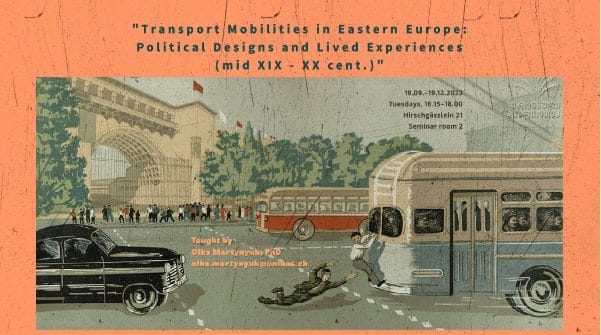 Transport Mobility in Eastern Europe: Political Designs and Lived Experiences (mid XIX – XX Century)
Transport Mobility in Eastern Europe: Political Designs and Lived Experiences (mid XIX – XX Century)
The course invites to explore East-European History of mid XIX - late XX cent. through the concept of mobility, which encompasses movement of people, goods and ideas. Students will deal with a corpus of texts on social history of transportation, as well as with a rich array of visual materials. Of special interest will be cases, specific to the region, for example cultures of Christian and Muslim pilgrimage, Socialist rallies, trolleybus infrastructures or “destalinization” of metro stations. Cases of imported western technologies will provide ground for interregional comparisons, not only in aspects of introduction of transport system, but also in aspects of their exploitation and disintegration. The course is built on a premise...
The course invites to look at the history of Soviet Ukraine from the perspective of its everyday practices. Using many visual sources from 1922 to 1991, students will explore daily routines, housing, clothing, transportation, leisure, and music consumption in urban and rural settings. Periods of peace, war, and crisis will receive equal attention so that one can see how global developments were experienced on a microlevel. Students will explore how maintaining everyday objects and personal habits was essential for building personal safety in different historical contexts. The everyday histories of Soviet Ukraine will also provide a deeper insight into the standard historical narratives about East-European societies, particularly their dialogue with the global society...
This lecture course comparatively and transnationally investigates twentieth-century communism as a modern civilization with a global outreach. It looks at the global spread of communism as an ideology, an everyday experience, and a form of statehood in the Soviet Union, Europe, Asia (i.e.Mao’s China), and post-colonial Africa. With the exception of North America and Australia, communist regimes were established on all continents of the world. The course will examine this historical process from the October Revolution (1917) to the Chernobyl nuclear disaster (1986), which marked the demise of the communist state. The emphasis is not just on state-building processes or Cold War politics but primarily on the social, gender, cultural and economic policies that...
The course explores the history of Russia as an empire from Peter I up to now in the methodological perspective of the new imperial history. What are the historical preconditions and sources of Russian imperialism and militarism? How did the small principality of North-Eastern Europe manage to create the largest empire in the world? To what extent the Russian Empire of the 18th and 19th centuries differed from European colonial empires as well as eastern imperial polities such as Ottoman Empire and China? How did the imperial nationalities policies emerge and evolve? What role did the competition between "great powers" play in turning Russia into an empire? The course attempts to answer these...
The field of social history has achieved the edge of its popularity in 1950-1980s. It was strongly connected with other disciplines, such as economics, demography, sociology, and allowed historians to reach a much wider range of research themes. Since the 1960s, the social history of the Jewish people became important and influential part of the studies. Historians were exploring the possibilities to study Jewish community with new tools and integrating different representatives of Jewish community – workers, women, immigrants, criminals - in a research. Since 1990s historians of Jewish past shifted their interest to cultural studies. However, in the last years, we can see an economic turn, which signifies the search for a...
The aim of the course is to get to know how to analyze examples of visual culture, including: fiction films and documentaries, video, photography. Both contemporary and historical materials will be studied, together with theoretical texts and publications (from the area of film and media studies, anthropology, cultural studies and history. Although images are mostly seen, if you want to really know them and understand them really well, you must not only "see" them but also "read" them, that means to analyze them as a complex message/ text. That is why at our course we will firstly discuss some terms and categories, that would help us to read images such as: composition, convention,...
The course aims to discuss the major military conflicts of the twentieth century from a gender perspective. In doing so, the course covers the history of global and local wars in a wide variety of regions, including Europe, Africa, and Asia. However, rather than surveying a vast number of military conflicts, we will use a case study approach to conduct in-depth analyses of external and internal dynamics of military encounters and the role of gendered violence during them.
In our mini-course we will explore cultural interaction between Jews and non-Jews (Ukrainians, Poles, Russians) in the borderlands of the Habsburg and Romanov empires. This is interaction that may have been conscious or unconscious, and may have involved encounter, appropriation, negotiation, exchange and destruction.
This seminar explores ideas and practices of heritage in Eastern and Central Europe between 1945 and now. The course is designed as a set of five meetings, which will include short lecture introductions, seminar discussions, and at the end – practical workshop. Our meetings will be about discussing the texts, addressing cases you will read about or already know. Thіs the seminar will be our common effort in reading, asking questions and searching for answers. Therefore it is crucial that you will read assigned parts of selected texts and also consult texts from the recommended reading list. While reading assigned texts, please keep a short track of your ideas and formulate several questions...
Our main focus in this class will consist in Jewish experiences with cities in the twentieth century. Geographically, our center of attention will be Central and Eastern Europe (with our main – but not exclusive – emphasis on territories that, at one point or the other, came under Soviet rule); chronologically, we will concentrate (unevenly) on the period between the end of the First World War and the end of the Soviet Union. In particular, the Holocaust and the Second World War were events of central and terrible importance for this period and area. Accordingly, we will pay special attention to them.
Historians constitute a rather conservative breed, and of course some historians are more conservative than others. The comfort zone of a conservative historian is a document, that is a preserved text, especially one that has some kind of official provenance. Memoirs, testimonies, oral history — the conservative historian considers them at best to be second-rank sources, too subjective and uncertain. This kind of historian does not even recognize visual materials as sources and makes no use of them. But this is unfortunate, because we live at a time in which all sorts of information is presented ever more frequently by visual means. Our students have become accustomed to acquire information in a form...
Ukraine’s twentieth century was tragically marked by much politically motivated violence and authoritarian regimes as well as movements, from the radical left and the radical right. These forces and events did not only do great harm in the past but left memories and legacies that are still challenging to contemporary Ukraine. In this class, we will focus on several key issues of history, memory, and politics. The readings cannot be exhaustive. Instead, our aim is to read and discuss a sample of important short texts that allow us to reflect more broadly on the underlying questions.
This course was a part of Jewish History, Multiethnic Past, and Common Heritage: Urban Experience in Eastern Europe summer school.
This course forms a part of Jewish History, Multiethnic Past, and Common Heritage: Urban Experience in Eastern Europe summer school.
The course will cover the major development of the East European Jewry from the mid-eighteenth century till the present. More specifically, it will focus on the apparently largest category of modern Jewish history, i.e. modernity itself. The course will start with the discussion of what modernity means in contemporary scholarly discourse, and—more specifically—how it is applied today in historiography of East European Jewry. This introduction will provide a frame for the focus of the course: the analysis of the changing life patters and differing strategies of adopting, rejecting, or negotiating modernity in every-day lives of East European Jews.

